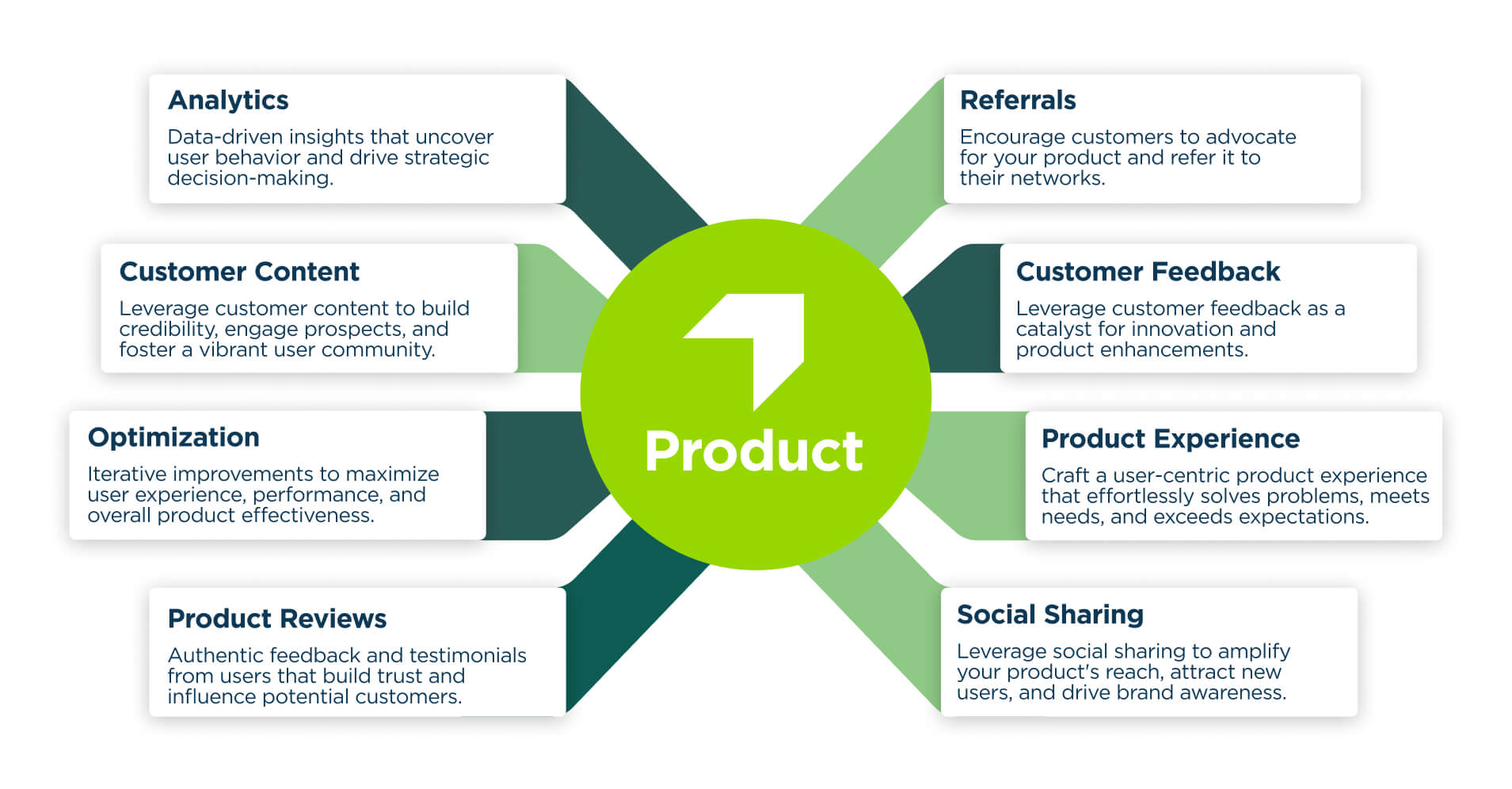Let’s embark on an expedition, an exploration of the known business landscape, and a voyage into the uncharted territories of innovative product development strategies. This is not just a journey of discovery; it’s an adventurous leap into the future. And it begins with a question: How do successful businesses achieve phenomenal growth in today’s cutthroat marketplace?
Agile: The Golden Compass to Navigate the Unknown
In the labyrinth of product development, the traditional roadmaps are fading. In their place, the formidable trio of Lean Startup, Agile Development, and Design Thinking has emerged, charting a new course through the unknown. The following frameworks of research and product development have shifted the paradigm of modern commerce:
- Lean Startup is the guiding star, encouraging hypothesis testing and rapid iteration. As Eric Ries, author of The Lean Startup, writes, this approach encourages “entrepreneurs in companies of all sizes to test their vision continuously, to adapt and adjust before it’s too late” [1]. The cornerstone of this methodology is the Minimum Viable Product (MVP), a basic version of a product that can be used to test hypotheses and iterate rapidly.
- Agile Methodologies, such as Scrum and Kanban, are the compass, promoting flexibility, constant communication, and an adaptable mindset to navigate change.
- Design Thinking is the rudder, steering the journey with a human-centered approach emphasizing empathy, experimentation, and swift iteration to effectively meet users’ needs. Tim Brown, CEO of IDEO, describes Design Thinking as “a human-centered approach to innovation that draws from the designer’s toolkit to integrate the needs of people, the possibilities of technology, and the requirements for business success” [2]. This methodology emphasizes empathy, experimentation, and swift iteration to effectively meet users’ needs.
When synergized, these potent methodologies form an innovative roadmap. The Jobs-to-be-Done (JTBD) framework adds the critical dimension. As pointed out by Clayton M. Christensen, author of The Innovator’s Solution, this theory focuses on understanding why customers “hire” products or services to perform specific tasks. Aligning product development with these “jobs” is the key to creating solutions that drive customer satisfaction and fuel business growth [3].
Growth Hacking: The Power Tool for Scaling New Heights
Picture a magical device that integrates marketing, data science, and product development to kindle a roaring fire of exponential business growth. This isn’t just a figment of imagination – it’s the reality of Growth Hacking for modern businesses. This innovative approach is the bedrock of a “product-led growth” strategy, creating solutions that users not only admire but become passionate advocates for.
In the growth hacker’s arsenal, there are several powerful tools. Experimentation and data-driven decision-making combine cross-functionally to catapult businesses through the stages of the Growth Hacking Funnel. This strategic funnel, marked by the pirate-like chant of “Acquisition, Activation, Retention, Referral, and Revenue” (AARRR), provides a roadmap for scalable growth strategies and automated processes.
Let’s delve a bit deeper into this Product-Led Growth Hacking arsenal and AARRR:
Data-Driven Decision Making: Think of this tool as a captain’s navigational instruments for sailing the vast seas. But instead of a compass and sextant, growth hackers use data and analytics. They’re like seafarers keenly observing the direction of the wind, represented by key metrics such as customer acquisition cost (CAC), lifetime value (LTV), conversion rates, and churn rates. These metrics guide the ship, revealing bottlenecks, highlighting hidden opportunities, and informing decisions that steer the business towards growth.
Just as seasoned navigators rely on state-of-the-art radar and GPS, growth hackers often utilize advanced analytics tools to track, measure, and analyze data. This data provides insight into market trends, customer behaviors, and the competitive landscape, much like a detailed maritime chart, enabling them to plot the most promising course and guide their business towards successful harbors.
Automation: In our nautical analogy, consider automation the ship’s autopilot. It keeps the vessel on course, freeing up the crew to focus on other tasks. Growth hackers, in their quest for rapid growth, leverage automation to streamline processes and scale their strategies, much like automating tasks for a ship’s crew. This involves automating repetitive and time-consuming tasks such as marketing campaigns, customer outreach, and data collection.
Automation can be seen as a crew of tireless robotic sailors, working around the clock, performing tasks with precision and efficiency. They liberate the human crew, in this case, the growth team, to focus on strategic planning, innovation, and complex challenges that require a human touch.
Growth Hacking Funnel (AARRR): The journey of a growth hacker is often depicted as a funnel. Each stage of the funnel, known as the AARRR funnel (Acquisition, Activation, Retention, Referral, and Revenue), is a landmark in the customer’s journey and calls for different strategies and tactics.
The AARRR funnel turns growth hackers into pirates of the business world, navigating the high seas towards the coveted treasure island of exponential growth. If you hear a growth hacker shouting “AARRR!”, don’t panic. They’re not about to make you walk the plank. They’re merely charting their course to success. So, are you ready to hoist the mainsail and set your sights on growth? Let’s conquer these turbulent waters together, matey!
Each stage of the AARRR funnel is a key point in the journey. Acquisition is the enticing ‘X marks the spot’ on the map, drawing potential customers in. Activation turns these potential customers into true adventurers, actively engaging with the product. Retention ensures these adventurers stay loyal, consistently finding value in the product. The Referral stage transforms satisfied customers into advocates, encouraging them to share their ‘map’ with others. Finally, Revenue is the crowning glory, the gleaming treasure chest where the business reaps the financial rewards of the adventure.
In essence, the AARRR funnel is a comprehensive navigational chart for growth hackers. This chart guides them through the tumultuous seas of market competition, steering their strategies and tactics at each stage. It is not a simple linear journey but a dynamic and iterative process that requires constant tracking, analyzing, and refining. Like any seasoned seafarer, a growth hacker knows that the journey towards the coveted island of exponential business growth is one of constant adaptation and innovation.
From the initial Acquisition of customers to their Activation, to their Retention and eventual Referral, and finally, to the Revenue that signals successful growth, each stage of the AARRR funnel offers unique challenges and opportunities. It is through these stages that businesses find their bearings, adjust their sails, and navigate towards exponential growth.
So, when you hear the growth hacker shout “AARRR!”, don’t panic. They’re not about to make you walk the plank. They’re merely charting their course for stellar growth. Are you ready to hoist the mainsail and set your sights? Let’s conquer these turbulent waters together, matey!
Product-Led Growth: The Secret Map to Treasure Troves of User Acquisition
Product-Led Growth (PLG) is akin to a treasure map guiding businesses to untapped wealth in customer acquisition, conversion, and expansion. The key elements of a successful PLG strategy – user-centric design, freemium models or free trials, viral potential, self-service capabilities, continuous improvement, and cross-functional collaboration – form the path to this treasure.
However, uncovering this treasure isn’t a mere stroke of luck; it requires meticulous planning and execution, analogous to a well-conducted archaeological excavation. In this context, effective testing, much like the archaeologist’s careful brush, ensures the preservation and presentation of the product, making the first interaction with the user flawless and impressive.
The PLG model thrives on constant iteration, like an archaeologist revisiting their findings, refining their theories, and retesting their hypotheses. Product-Led Growth metrics are similarly revisited and scrutinized. It is important to note, a strong automated test suite is essential to ensuring product reliability and that new features don’t introduce unwanted artifacts, or in our case, bugs.
There’s no better testament to the potency of PLG than the success stories of Slack, Dropbox, and Zoom. These companies, like treasure hunters who struck gold, have successfully navigated the PLG map, beating estabilished competitors through the science of research and product development. By creating products that users adore, they’ve transformed users into brand advocates, effectively reducing acquisition costs and boosting retention and satisfaction.
Supporting this claim, a report by OpenView Partners reveals an eye-opening Product-Led Growth metric, Companies with a Product-Led Growth strategy have a “30% higher enterprise value to revenue multiple than other SaaS companies” [4]. This compelling statistic underscores the potential of the PLG strategy in creating a business treasure trove.
In an article by Harvard Business Review, it was highlighted that “traditional sales and marketing strategies are increasingly less effective in driving growth” [5]. PLG has emerged as an alternative to these traditional strategies, and its success can be seen in companies like Slack, which achieved a $5 billion valuation in just four years [6].
Moreover, a whitepaper by Pendo revealed that “Product-Led companies grow 2.2x faster than companies with other Go-to-Market strategies” [7]. This impressive statistic is like the gleam of gold, further emphasizing the value of embracing a Product-Led Growth strategy for businesses aiming to achieve rapid expansion.
Embrace the Future of Product Development
Successful, fast-growing businesses are explorers who adopt innovative methodologies like Agile, Growth Hacking, Product-Led Growth, and automate everything they can. These strategies form the compass, the tool, and the map that guide businesses towards creating products that users love, driving customer satisfaction, and spurring rapid business growth.
Are you prepared to transform your product development strategy and accelerate your company’s growth? Begin with a thorough examination of your current strategy. Are you utilizing any of the approaches we’ve explored? If not, identify which methodologies would best align with your business model and industry.
Engage your team in embracing a growth mindset. Remember, approaches like growth hacking and Product-Led Growth are not just strategies, they’re cultures that need to permeate your entire organization.
In the end, always keep your compass pointed towards the customer. Whether it’s through Design Thinking, JTBD, or Product-Led Growth, the most successful product development strategies are those that solve real problems for real people.
The future of product development is here, a future defined by rapid iteration, continuous improvement, and, above all, growth. So, are you ready to embrace these innovative strategies and propel your business into new dimensions of success? Your journey towards transformative growth begins now. Empower your product, empower your business!
If Cortado can lend a hand, schedule a call with the author David Russell and discover how innovation can transform your business.
References:
[1] Ries, E. (2011). The Lean Startup: How Today’s Entrepreneurs Use Continuous Innovation to Create Radically Successful Businesses. Currency.
[2] Brown, T. (2009). Change by Design: How Design Thinking Transforms Organizations and Inspires Innovation. Harper Business.
[3] Christensen, C. M., & Raynor, M. E. (2013). The Innovator’s Solution: Creating and Sustaining Successful Growth. Harvard Business Review Press.
[4] OpenView Partners. (2018). The 2018 Product Benchmarks Report. Retrieved from https://www.slideshare.net/OpenViewVenture/the-2018-product-benchmarks-report
[5] Pachter, B. (2019). The New Sales Imperative. Harvard Business Review. Retrieved from https://hbr.org/2017/03/the-new-sales-imperative
[6] Wadhera, R. (2017). How Slack Became a $5 Billion Company in Less Than 5 Years. Medium. Retrieved from https://rbwadhera.medium.com/how-slack-became-a-5-billion-company-in-less-than-5-years-bc5404637e9
[7] Pendo. (2019). The State of Product Leadership 2019. Retrieved from https://www.pendo.io/resources/the-state-of-product-leadership-2019/




